A vertical vegetable garden is a space-saving solution for growing vegetables in small areas. In this type of gardening, plants are grown vertically, using structures such as trellises or hanging containers, allowing for efficient use of space and easy access to the plants.
It is a popular choice for urban gardeners or those with limited gardening space, as it maximizes yield while taking up minimal ground space. Vertical vegetable gardens are not only practical but also visually appealing, serving as a beautiful addition to any patio or balcony.
With careful planning and proper care, you can enjoy a bountiful harvest of fresh and healthy vegetables right at your fingertips.
Benefits Of Vertical Vegetable Gardens
Vertical vegetable gardens are a popular and innovative way to grow fresh produce in limited spaces. These gardens not only provide a stunning visual appeal but also offer numerous benefits to both experienced and amateur gardeners. In this section, we will explore the various benefits that vertical vegetable gardens can bring to your home.
Maximizing Small Spaces
One of the key advantages of vertical vegetable gardens is their ability to maximize small spaces. Whether you live in an apartment with limited balcony space or have a small backyard, vertical gardens allow you to utilize the vertical dimension of your space. Instead of spreading horizontally, these gardens grow upwards, making the most of every inch available.
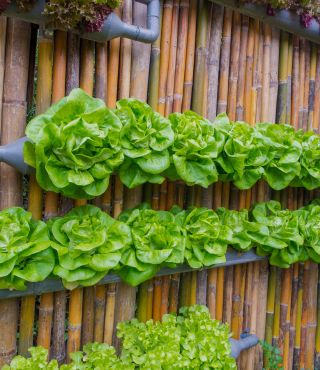
Optimal Water And Nutrient Use
Vertical vegetable gardens also contribute to efficient water and nutrient utilization. Unlike traditional gardens where water tends to drain away, vertical gardens enable easy access to water and nutrients. As the plants are stacked vertically, moisture and nutrients can trickle down from the top layers to the bottom ones, ensuring each plant receives an adequate supply. This not only reduces the water needed for irrigation but also minimizes the risk of nutrient leaching into the ground.
Moreover, vertical gardens provide a more concentrated area for plants, creating a microclimate that gives better control over water and nutrient levels. This controlled environment can help optimize the growth and health of your vegetable plants, resulting in higher yields and healthier produce.
Choosing The Right Vegetables For Vertical Gardens
When it comes to vertical gardening, selecting the right vegetables is crucial for a successful and bountiful harvest. Not all plants thrive in a vertical environment, so it’s essential to choose varieties that are well-suited to these unique growing conditions. In this article, we’ll explore two types of vegetables that are particularly well-suited for vertical gardens: climbing and vining varieties, as well as compact and bush varieties.
Climbing And Vining Varieties
Climbing and vining vegetables are perfect for vertical gardens as they naturally tend to grow upwards, making efficient use of limited space. These plants feature long, trailing stems that require support to grow vertically. By installing trellises, stakes, or wire mesh, you can guide their growth upwards, freeing up valuable ground space.
The following climbing and vining vegetables are ideal for vertical gardening:
| Vegetable | Characteristics |
| Tomatoes | Climbing or vining varieties include cherry, Roma, and heirloom. |
| Cucumbers | Choose cucumber varieties that produce long, slender fruit for vertical growth. |
| Pole Beans | These bean plants love to climb, so provide them with trellises or strings to cling to. |
| Squash | Opt for vine varieties like zucchini or yellow squash that can be trained upwards. |
Compact And Bush Varieties
If you have limited vertical space or prefer not to use support structures, compact and bush varieties are an excellent option for your vertical garden. These vegetables have a more compact growth habit, saving you space and minimizing the need for trellises or stakes.
Consider the following compact and bush varieties for your vertical garden:
- Radishes: Choose compact varieties that produce small, round roots.
- Lettuce: Look for lettuce varieties specifically bred for container or vertical gardening.
- Herbs: Select compact herb varieties, such as dwarf basil or thyme, which thrive in smaller spaces.
- Carrots: Opt for baby carrot varieties that mature quickly and have a shorter root length.
By carefully selecting vegetables that align with the vertical gardening technique you plan to use, you can maximize your growing space and enjoy a diverse and abundant harvest. Whether you choose climbing and vining varieties or compact and bush varieties, the key is to consider the growth habits of each plant and provide the necessary support or space for optimal growth. So get started on your vertical garden and enjoy the benefits of fresh vegetables, even in limited spaces!
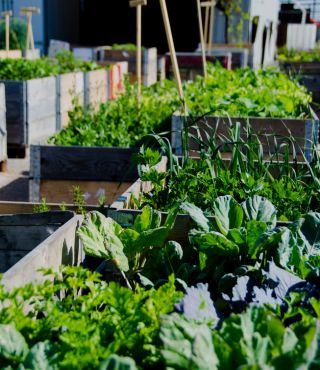
Designing And Building A Vertical Vegetable Garden
A vertical vegetable garden is an excellent solution for urban dwellers with limited space who still want to grow their own fresh produce. It maximizes the use of vertical space, making it a practical and functional option. In this blog post, we will discuss important factors to consider when designing and building a vertical vegetable garden.
Selecting The Location
When selecting the location for your vertical vegetable garden, there are a few key considerations to keep in mind. First, choose a spot that receives ample sunlight throughout the day. Vegetables typically require at least six hours of direct sunlight to thrive. Additionally, ensure the location is easily accessible for watering and maintenance.
Choosing The Structure
Choosing the right structure for your vertical vegetable garden is essential for its success. There are various options available, including vertical planters, trellises, and hanging baskets. Consider the available space and the type of vegetables you wish to grow. Some plants, like tomatoes and cucumbers, require sturdy support systems, while others, like herbs and lettuce, can thrive in smaller containers.
Setting Up The Support System
Once you have selected the structure for your vertical vegetable garden, it’s time to set up the support system. If you opt for vertical planters or trellises, ensure they are securely mounted or anchored to a wall or fence. This will prevent them from toppling over or getting damaged during strong winds.
If you decide to use hanging baskets, choose ones with strong hooks and sturdy chains. Ensure they are properly fastened to a secure point to avoid accidents.
Additionally, consider installing a drip irrigation system to provide consistent moisture to your plants. This will save you time and ensure your vertical vegetable garden receives the right amount of water without over or under-watering.
By following these steps, you can successfully design and build your own vertical vegetable garden. Not only will it provide you with fresh and organic produce, but it will also serve as a beautiful and practical addition to your outdoor space. Happy gardening!
Essential Tips For Planting And Caring For A Vertical Vegetable Garden
Growing your own vegetables is a fantastic way to ensure a fresh and healthy supply of produce right at your doorstep. And if you have limited space, a vertical vegetable garden is a perfect solution. Whether you live in an apartment, have a tiny backyard, or simply want to maximize your gardening area, vertical gardening allows you to cultivate a bountiful harvest in a compact, vertical space. To help you make the most of your vertical vegetable garden, here are some essential tips for planting and caring for it.
Preparing The Soil
Before planting your vegetables in a vertical garden, it is crucial to prepare the soil adequately. Start by choosing a high-quality potting mix rich in organic matter, which will provide your plants with the necessary nutrients. Mix in compost or aged manure to improve soil fertility and drainage.
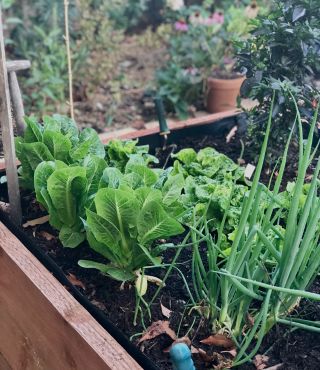
Proper Plant Spacing
When planting in a vertical garden, it is important to give your vegetables enough space to grow and thrive. While vertical gardening maximizes space, overcrowding plants can lead to stunted growth and poor yields. Be sure to follow the recommended plant spacing guidelines for each vegetable variety and adjust accordingly based on the available space in your vertical garden.
Providing Adequate Sunlight And Water
Just like traditional gardens, vertical gardens also require adequate sunlight and water for successful growth. Place your vertical garden in a location that receives at least 6 to 8 hours of sunlight per day. If you have limited sunlight, consider growing shade-tolerant vegetables such as lettuce or spinach.
Ensure your vertical garden is watered consistently. The vertical orientation of the garden may cause water to drain faster, so check the moisture level regularly and water accordingly to prevent plants from drying out. Consider installing a drip irrigation system or using self-watering containers to provide a steady water supply to your vegetables.
Common Challenges And Solutions For Vertical Vegetable Gardens
Vertical vegetable gardens are a great space-saving solution for urban dwellers and those with limited garden space. However, like any type of gardening, vertical vegetable gardens come with their own set of challenges. In this section, we will discuss two common challenges faced by vertical vegetable gardeners and their effective solutions.
Pest And Disease Management
Pests and diseases can wreak havoc on your precious vegetable plants, potentially leading to poor yields or even complete crop loss. Thankfully, there are several strategies you can employ to combat these challenges:
- Select pest-resistant varieties: Opt for vegetable varieties that have built-in resistance to common pests and diseases. Consult a local nursery or research online to find suitable varieties for your area.
- Use physical barriers: Install netting or screens around your vertical garden to prevent insects and larger pests from reaching your plants. This method acts as a physical barrier without the need for chemical interventions.
- Rotate crops: Avoid planting the same vegetables in the same spot year after year. Crop rotation helps to disrupt the life cycles of pests and diseases, reducing their impact on your garden.
- Practice good sanitation: Regularly remove dead plant material and fallen leaves from your vertical garden. This prevents the build-up of diseases and pests that may overwinter in the debris.
- Employ natural pest control methods: Consider introducing beneficial insects to your garden, such as ladybugs or praying mantises, that feed on harmful pests. Additionally, you can use organic insecticides or homemade sprays made from natural ingredients like garlic or neem oil.

Managing Plant Weight
As plants grow in a vertical garden, their weight can become a concern, especially for structures that may not be designed to hold a heavy load. Here are some solutions for managing plant weight effectively:
- Choose lightweight vegetables: Some vegetables naturally have lighter foliage and root systems than others. Opt for vegetables such as lettuce, herbs, or strawberries that are less likely to put significant strain on your vertical garden structure.
- Use sturdy trellises or supports: Invest in strong and durable trellises or supports that can bear the weight of your vertical garden. Avoid flimsy structures that may collapse under the weight of your plants.
- Regular pruning and maintenance: Keep a close eye on your plants and prune them regularly to remove excess foliage. This not only helps to manage their weight but also promotes better airflow and reduces the risk of disease.
- Consider lightweight growing media: Instead of using heavy soil, explore lightweight alternatives such as coconut coir, perlite, or a combination of these materials. Lightweight growing media can reduce the overall weight of your vertical garden.
- Secure plants properly: Make sure to properly secure your plants to the trellises or supports to prevent them from toppling over. Use soft ties or clips specifically designed for this purpose.
Inspiring Vertical Vegetable Garden Ideas And Examples
Vertical Garden In Small Urban Spaces
Urban dwellers often face space constraints when it comes to growing their own vegetables. However, there are innovative solutions available that allow you to maximize your limited space through vertical gardening.
Vertical vegetable gardens are a fantastic way to bring greenery into your urban environment, all while cultivating your own fresh produce. These compact gardens can be easily set up on balconies, patios, or even against the walls of your home.
By utilizing vertical space, you can grow a wide variety of vegetables such as tomatoes, cucumbers, peppers, and herbs. Not only does this provide you with a fresh and sustainable food source, but it also adds a touch of charm and beauty to your urban living space.
Let’s explore some creative ideas and examples that will inspire you to create your own vertical vegetable garden in small urban spaces.
Vertical Herb Garden In The Kitchen
Imagine stepping into your kitchen and having fresh herbs at your fingertips. With a vertical herb garden, this dream becomes a reality. By utilizing the unused wall space in your kitchen, you can create a beautiful and practical herb garden.
Vertical herb gardens not only add a pop of color and fragrance to your cooking area but also provide you with easy access to a variety of herbs for enhancing the flavors of your dishes.
By growing herbs such as basil, thyme, rosemary, and mint vertically, you can save valuable counter space while still having a thriving herb garden. This not only elevates the aesthetics of your kitchen but also ensures that your dishes are always infused with the freshest flavors.
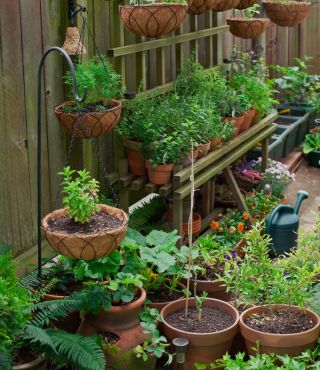
Frequently Asked Questions Of Vertical Vegetable Garden
What Vegetables Work Best In A Vertical Garden?
The best vegetables for a vertical garden are lettuce, tomatoes, cucumbers, spinach, and herbs like basil and mint. These plants thrive in vertical setups and provide a bountiful harvest. Create a vibrant and productive garden with these suitable vegetables.
What Vegetables Grow Straight Up?
Vegetables that grow straight up include beans, peas, cucumbers, corn, and pole beans.
Can You Make A Vertical Vegetable Garden?
Yes, it is possible to create a vertical vegetable garden. Vertical gardening allows you to grow plants vertically, making it ideal for small spaces and maximizing the use of limited areas. With the right tools and techniques, you can grow a variety of vegetables in a vertical garden setup.
Conclusion
A vertical vegetable garden offers a practical and space-saving solution for urban dwellers and those with limited gardening areas. With its numerous benefits, such as easy accessibility, improved air circulation, and enhanced visual appeal, this innovative gardening method allows anyone to grow their own fresh and organic produce.
Whether you have a small balcony or a tiny backyard, a vertical vegetable garden can transform your space into a green oasis. Start growing your own vertical garden today and reap the rewards of homegrown goodness.
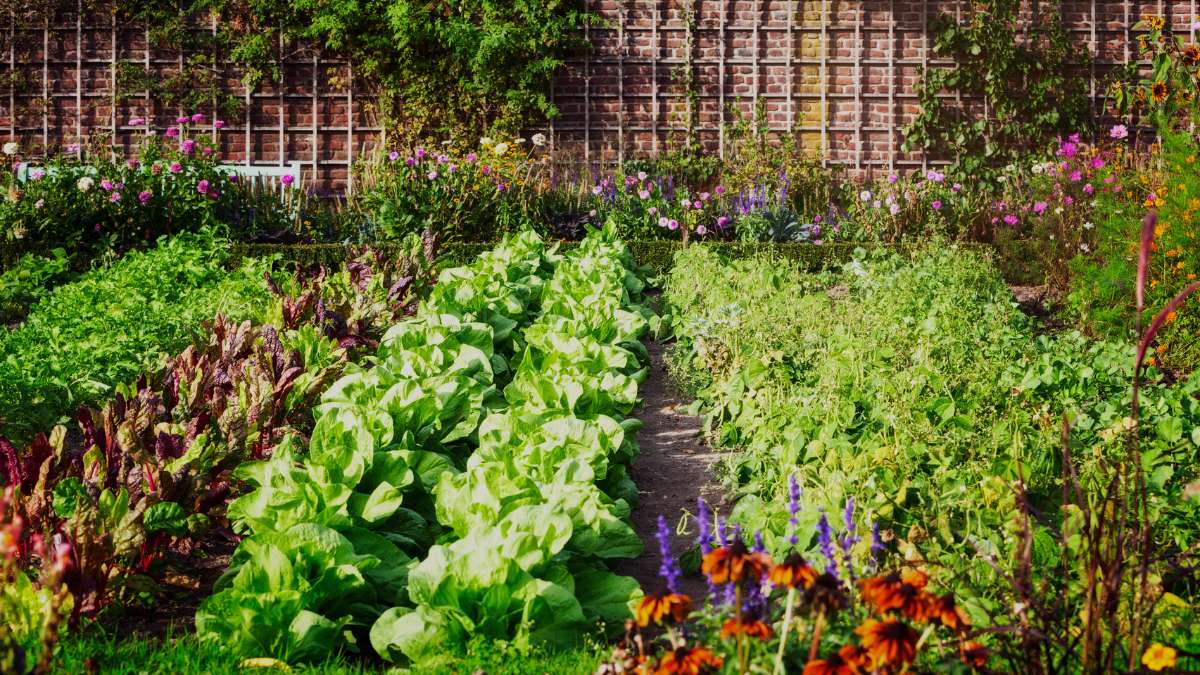
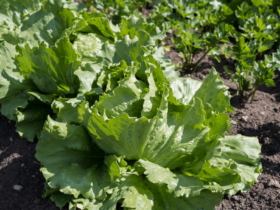



Leave a Reply